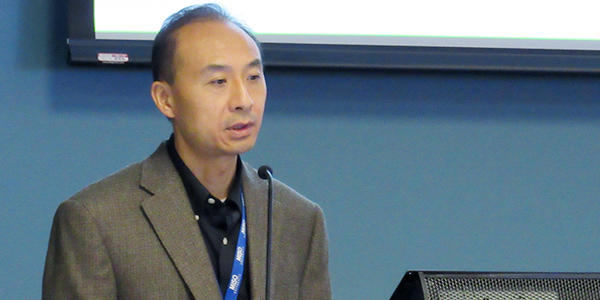By Amanda Durish Cook
CARMEL, Ind. — After experiencing a surge in new projects, MISO is hoping bring solar generation under the umbrella of its dispatchable intermittent registration for market participation, the RTO signaled last week.
MISO’s proposal, issued Thursday, seeks to put solar generation on par with wind generation in the dispatch process. The method to be used provides a bit of déjà vu for some seasoned stakeholders.
Kun Zhu, MISO manager of resource retirement, said the proposal was precipitated by the flood of solar projects lining up for interconnection. “Quick story: Based on what’s coming in the queue, we’re set to have a big surge in solar,” he said in opening the Market Subcommittee meeting Thursday. “Now we expect the same challenge we saw 10 years ago,” referring to the wind generation boom that took hold about a decade ago.
Zhu said MISO’s plan is to require future commercial solar generation to register as dispatchable intermittent resources (DIRs), as it does for wind resources. Currently, solar generators can choose to be DIRs or simply remain intermittent resources, which are price-takers in the market and ineligible for dispatch. DIRs can submit price-sensitive offers and be dispatched by the market.
While MISO currently has just 243 MW of solar under the DIR registration, it reports that more than 9 GW worth of solar projects have executed generation interconnection agreements or are close to doing so. Beyond that, about 52 GW of solar are in the early stages of the interconnection study process.
“The time is now to expect the challenge and mitigate it,” Zhu said, adding that MISO can avert the growing pains it experienced in 2008 and 2009 when operators had to initially manually curtail wind generation over the phone. “It was cumbersome and not optimal and not ideal, and it caused big challenges in the control room.”
MISO won FERC approval in 2011 to create the DIR category for wind.
“We’re bringing solar to the same playground as wind,” Zhu said, pointing out that FERC recently accepted a similar change to solar treatment in SPP.
Just as in the original DIR filing for wind, MISO is proposing a two-year transition period to register solar resources. Solar projects with interconnection agreements before the time of the filing have two years to convert from intermittent resources to DIRs. Solar projects with no interconnection agreement in place before the effective date of the new tariff rule must register as DIRs immediately with no grace period.
Customized Energy Solutions’ David Sapper asked how the proposal would treat hybrid solar and storage projects.
Zhu said the hybrid angle is outside the scope of the proposal — for now. MISO is holding a special workshop in early October to discuss the rules and implications around hybrid projects. (See MISO to Host Hybrid Projects Workshop.)
“Hybrid is a new topic. What we’re discussing now is 100% pure solar generation, limited by the weather,” Zhu said.
MISO hopes to make a Tariff filing sometime in December.





